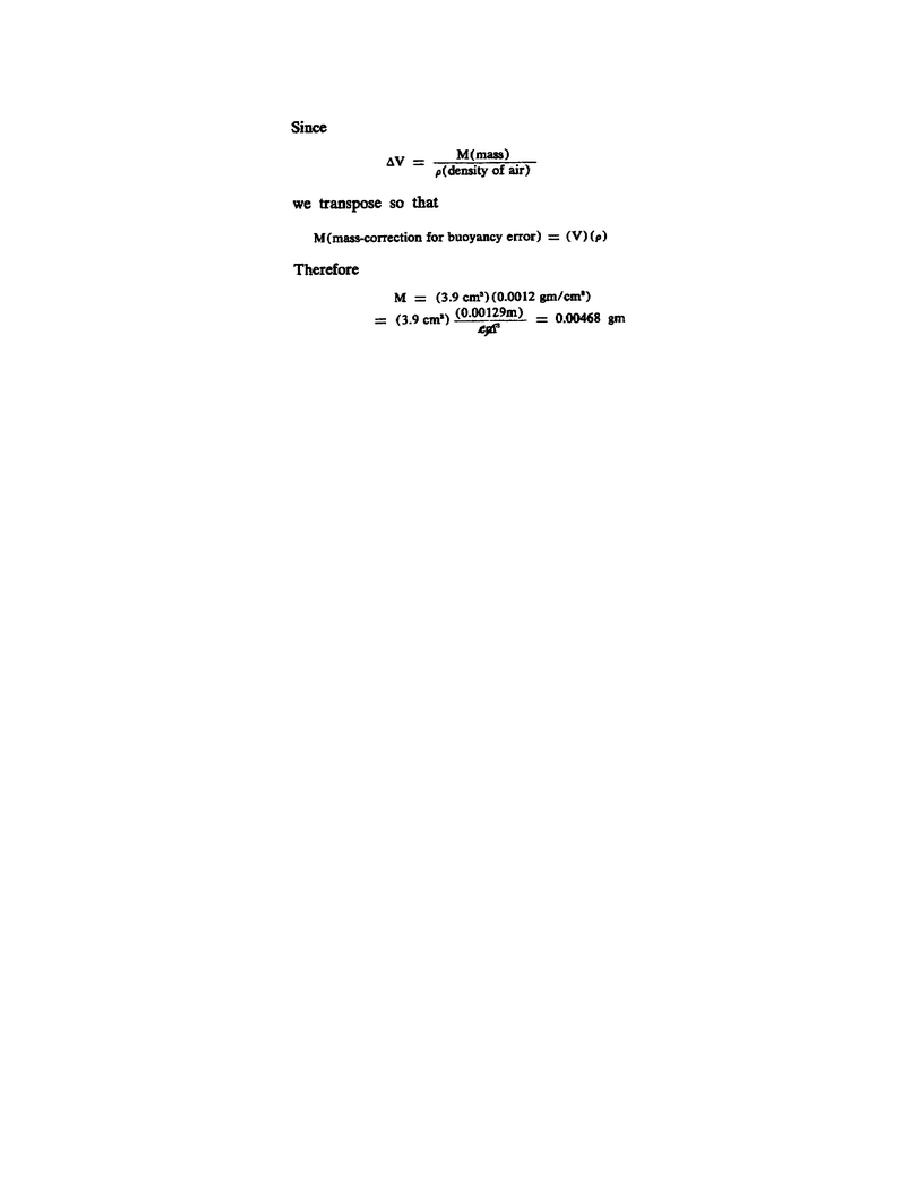
SM0486
m. Sensitivity.
The sensitivity of a balance is defined as the amount of
weight required to cause a given swing or deflection.
This may be stated in
various ways.
For example, if a 4-mg weight causes the pointer to swing 10
divisions, it may be stated that the balance has a sensitivity of 0.4 mg per
division. Likewise, it might be stated that the balance has a readability of 1/4
division and a sensitivity of 0.1 mg.
In the latter case, the balance has a
detectable sensitivity of 1/4 division or 0.1 mg. If the pointer were allowed to
come to rest, it would be found that this 4-mg weight only caused a change of 5
divisions in the final rest point of the pointer from the zero or initial rest
point. Now, it should be stated that the balance has a sensitivity of 0.8 mg per
division.
You should be aware that there are different ways to define the term
"sensitivity of a balance" but for the purposes of this course and your calibration
program, the sensitivity is the amount of weight required to change the rest point
of the balance one division.
Now that you have completed your study of mass
measurement considerations, let's study the construction and operating principles
of a typical analytical balance.
n. Typical Analytical (Micro) Balance.
The construction and operation
principles for the typical analytical balance are so interdependent that it is
difficult to teach one without teaching the other.
However, in this section, we
identify some of the major components of a typical analytical balance before we
teach the basic operating principles for the balance.
o. Construction.
The illustration in Figure 5 shows how the knurled
digitizer drum of the analytical balance protrudes through the front panel to
permit manipulation for the digital readout shown in the illustration. Only the
upper portion of the front panel is shown in Figure 5A. The lower portion of the
instrument is constructed so that square openings on the front and sides permit
easy access to the single pan on which tares and weights are placed, as shown in
Figure 5B.
138



 Previous Page
Previous Page
